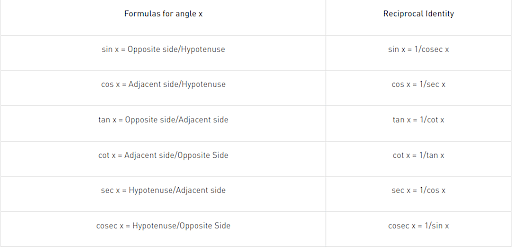The value of sin34°+cos64°-cos4° is______
The value of sin34°+cos64°-cos4° is______
- 0
- 3
- 2
- 1
The Correct Option is A
Solution and Explanation
We need to evaluate the expression \( \sin 34^\circ + \cos 64^\circ - \cos 4^\circ \).
1. Simplify Using Trigonometric Identities:
Notice the angles: \( 64^\circ = 90^\circ - 26^\circ \), and we can explore relationships with \( 34^\circ \) and \( 4^\circ \). Use the co-function identity for cosine:
\( \cos 64^\circ = \cos (90^\circ - 26^\circ) = \sin 26^\circ \)
The expression becomes:
\( \sin 34^\circ + \sin 26^\circ - \cos 4^\circ \)
2. Examine the Angles:
Notice that \( 34^\circ - 26^\circ = 8^\circ \), and \( 4^\circ \times 2 = 8^\circ \), suggesting a possible relationship. Let’s try to use sum-to-product identities for the sine terms:
\( \sin 34^\circ + \sin 26^\circ \)
Use the identity \( \sin a + \sin b = 2 \sin \left( \frac{a+b}{2} \right) \cos \left( \frac{a-b}{2} \right) \), where \( a = 34^\circ \), \( b = 26^\circ \):
\( \frac{a+b}{2} = \frac{34^\circ + 26^\circ}{2} = 30^\circ \), \( \frac{a-b}{2} = \frac{34^\circ - 26^\circ}{2} = 4^\circ \)
Thus:
\( \sin 34^\circ + \sin 26^\circ = 2 \sin 30^\circ \cos 4^\circ \)
Since \( \sin 30^\circ = \frac{1}{2} \), we get:
\( 2 \sin 30^\circ \cos 4^\circ = 2 \cdot \frac{1}{2} \cdot \cos 4^\circ = \cos 4^\circ \)
3. Substitute Back:
The original expression is now:
\( \sin 34^\circ + \cos 64^\circ - \cos 4^\circ = (\sin 34^\circ + \sin 26^\circ) - \cos 4^\circ \)
\( = \cos 4^\circ - \cos 4^\circ = 0 \)
4. Verify the Result:
The cancellation suggests the expression simplifies to zero. To confirm, we could compute numerically, but the algebraic simplification is consistent, and the angles’ relationships support this outcome.
Final Answer:
The value of \( \sin 34^\circ + \cos 64^\circ - \cos 4^\circ \) is \( 0 \).
Top Questions on Trigonometric Functions
- Evaluate: $ \tan^{-1} \left[ 2 \sin \left( 2 \cos^{-1} \frac{\sqrt{3}}{2} \right) \right]$
- CBSE CLASS XII - 2025
- Mathematics
- Trigonometric Functions
- What is \( \tan \left( \frac{1}{2} \left( \tan^{-1} x + \tan^{-1} \frac{1}{x} \right) \right) \)?
- Bihar Board XII - 2025
- Mathematics
- Trigonometric Functions
- \(\int \frac{\cos 2x}{\cos x + \sin x} dx \)
- Bihar Board XII - 2025
- Mathematics
- Trigonometric Functions
- In \( \triangle ABC \), if \( a = 13 \), \( b = 14 \), and \( c = 15 \), then find the values of:
(i) \( \sec A \)
(ii) \( \csc \frac{A}{2} \)- Maharashtra Class XII - 2025
- Mathematics & Statistics
- Trigonometric Functions
- Solve for \( x \), \[ 2 \tan^{-1} x + \sin^{-1} \left( \frac{2x}{1 + x^2} \right) = 4\sqrt{3} \]
- CBSE CLASS XII - 2025
- Mathematics
- Trigonometric Functions
Questions Asked in SRMJEEE exam
- A current of 2 A passes through a coil of 100 turns, producing a magnetic flux of 5 × 10⁻⁵ Wb per turn. What is the magnetic energy associated with the coil?
- SRMJEEE - 2025
- Magnetic Field
- A box contains 5 red balls and 7 blue balls. Two balls are drawn at random without replacement. What is the probability that both balls are red?
- SRMJEEE - 2025
- Probability
- Calculate the Reynolds number for a liquid with density 1 g/cm³ and viscosity 8 × 10⁻⁴ Pa·s, flowing at 0.5 m/s through a pipe of diameter 4 cm.
- SRMJEEE - 2025
- Viscosity
- Markovnikov's rule is applicable to which of the following reactions?
- SRMJEEE - 2025
- Chemical Reactions
- The molar conductivities at infinite dilution for Na₂SO₄, K₂SO₄, KCl, HCl, and HCOONa at 300 K are 260, 308, 150, 426, and 105 S·cm²·mol⁻¹, respectively. What will be the molar conductivity at infinite dilution (Λ⁰) for formic acid in the same unit?
- SRMJEEE - 2025
- Mole concept and Molar Masses
Concepts Used:
Trigonometric Functions
The relationship between the sides and angles of a right-angle triangle is described by trigonometry functions, sometimes known as circular functions. These trigonometric functions derive the relationship between the angles and sides of a triangle. In trigonometry, there are three primary functions of sine (sin), cosine (cos), tangent (tan). The other three main functions can be derived from the primary functions as cotangent (cot), secant (sec), and cosecant (cosec).
Six Basic Trigonometric Functions:
- Sine Function: The ratio between the length of the opposite side of the triangle to the length of the hypotenuse of the triangle.
sin x = a/h
- Cosine Function: The ratio between the length of the adjacent side of the triangle to the length of the hypotenuse of the triangle.
cos x = b/h
- Tangent Function: The ratio between the length of the opposite side of the triangle to the adjacent side length.
tan x = a/b
Tan x can also be represented as sin x/cos x
- Secant Function: The reciprocal of the cosine function.
sec x = 1/cosx = h/b
- Cosecant Function: The reciprocal of the sine function.
cosec x = 1/sinx = h/a
- Cotangent Function: The reciprocal of the tangent function.
cot x = 1/tan x = b/a
Formulas of Trigonometric Functions:
